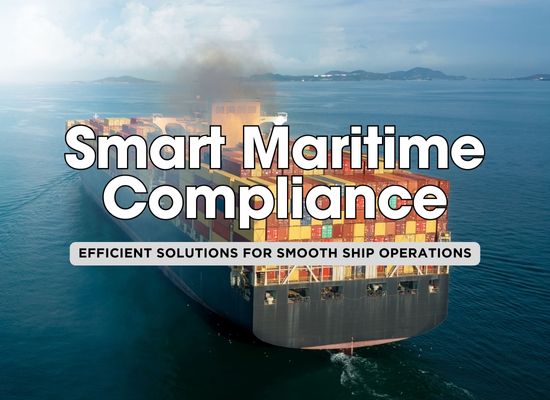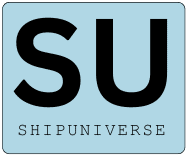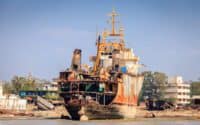The Ultimate Guide to Maritime Regulatory Compliance Solutions: Stay Ahead in 2025

From emissions caps to ballast water management, the compliance landscape for shipowners is more complex—and crucial—than ever. One misstep can lead to hefty fines, reputational damage, or even operational shutdowns. But here’s the good news: staying compliant doesn’t have to feel like sailing into a storm. With the right tools, strategies, and insights, you can transform regulatory challenges into opportunities for greater efficiency and sustainability.
Let’s dive into 8 essential maritime regulatory compliance solutions that will not only keep your fleet compliant but also give you a competitive edge in the year ahead.
1. Emissions Compliance
2. Ballast Water Management
3. Waste Management Compliance
4. Cybersecurity and Digital Compliance
5. Safety and Security Compliance
6. Port State Control (PSC) Readiness
7. Environmental Monitoring
8. Crew and Certification Compliance
1. Emissions Compliance: Tackling SOx with Scrubbers 🌍⛴️
Reducing sulfur oxide (SOx) emissions is at the forefront of maritime compliance for 2025. Scrubbers, or Exhaust Gas Cleaning Systems (EGCS), are one of the most popular solutions for meeting these regulations without switching to costly low-sulfur fuel. These systems allow ships to continue using high-sulfur fuel oils while staying compliant with MARPOL Annex VI and other emissions standards.
Why Scrubbers?
- 💰 Cost Savings: Use less expensive high-sulfur fuels while cutting emissions.
- 🌱 Eco-Friendly: Reduce harmful SOx emissions for cleaner air.
- ✔️ Regulatory Compliance: Stay on the right side of international and regional laws.
Types of Scrubbers:
- Open-Loop: Use seawater for neutralizing emissions; great for open-sea operations.
- Closed-Loop: Use freshwater and additives; ideal for strict discharge zones.
- Hybrid: A flexible combo of both systems.
🌟 SU Tip: Investing in a hybrid scrubber can offer long-term flexibility for changing regulations. Ensure your supplier offers support for installation and ongoing maintenance! 💡
Choosing the right scrubber depends on your vessel’s operational areas and budget. Let’s break down some top options below.
| ShipUniverse: Scrubbers Providers for Maritime Compliance | ||
|---|---|---|
| Manufacturer | System Features | Website |
| Wärtsilä | Offers open-loop, closed-loop, and hybrid scrubbers. Removes over 98% of sulfur oxides. Compatible with various vessel sizes and types. | Visit Wärtsilä |
| CR Ocean Engineering | Compact scrubber systems for open-loop, closed-loop, and hybrid designs. Ensures compliance with global sulfur regulations. | Visit CR Ocean |
| Ecospray | Advanced DeSOx EGCS solutions. Offers open-loop and hybrid designs suitable for large vessels like cruise ships and ferries. | Visit Ecospray |
| ANDRITZ | SeaSOx system provides both wet and dry exhaust gas cleaning options. Customizable to various ship designs for efficient compliance. | Visit ANDRITZ |
| PureteQ | Energy-efficient scrubber systems with low power consumption. Available in open-loop, hybrid-ready, and fully hybrid configurations. | Visit PureteQ |
2. Ballast Water Management: Staying Compliant 🌊⚓
Ballast water management is a critical aspect of maritime compliance in 2025, as improper handling can lead to the spread of invasive species and hefty fines. The IMO Ballast Water Management Convention requires vessels to treat their ballast water before discharge, ensuring it meets strict environmental standards.
Why Ballast Water Treatment Systems (BWTS) Matter:
- 🌱 Environmental Protection: Prevents ecological damage caused by invasive species.
- 💸 Avoid Fines: Non-compliance can result in significant penalties.
- ✔️ Global Compliance: Meets IMO and U.S. Coast Guard (USCG) requirements.
Types of Treatment Systems:
- UV Systems: Use ultraviolet light to neutralize organisms without chemicals.
- Electrochlorination: Generates chlorine to disinfect ballast water.
- Filtration Systems: Remove particles and organisms before treatment.
Having the right BWTS tailored to your ship’s trading routes and size is essential for operational efficiency and compliance.
| ShipUniverse: Ballast Water Treatment Systems | ||
|---|---|---|
| Manufacturer | System Features | Website |
| Alfa Laval | PureBallast 3: UV-based treatment system, certified by both IMO and USCG. Handles high-salinity and low-clarity water. | Visit Alfa Laval |
| Ecochlor | Chlorine dioxide-based system with minimal maintenance. Ideal for large vessels with high ballast flow rates. | Visit Ecochlor |
| Optimarin | Optimarin Ballast System: Uses UV technology, simple installation, and low power consumption. USCG and IMO approved. | Visit Optimarin |
| Panasia | GloEn-Patrol: Combines filtration and UV treatment; effective for a wide range of water conditions. Certified globally. | Visit Panasia |
| Hyde Marine | Hyde GUARDIAN: Compact design, uses filtration and UV light for reliable ballast water treatment. USCG and IMO approved. | Visit Hyde Marine |
3. Waste Management Compliance: Keeping the Oceans Clean ♻️🌍
Proper waste management is a cornerstone of maritime compliance in 2025. Under MARPOL Annex IV and V, ships are required to manage sewage and garbage discharge to minimize environmental impact. Non-compliance can lead to penalties and harm a vessel’s reputation.
Why Waste Management Systems Are Crucial:
- 🌱 Environmental Protection: Prevents marine pollution and protects ecosystems.
- 💸 Cost Savings: Avoid fines and delays during port inspections.
- ✔️ Regulatory Compliance: Meets global and regional waste disposal standards.
Types of Systems:
- Sewage Treatment Plants (STPs): Treat wastewater to safe discharge levels.
- Garbage Compactors: Reduce onboard waste volume.
- Incinerators: Safely dispose of non-recyclable materials.
Having the right waste management system ensures ships operate efficiently and responsibly.
| ShipUniverse: Waste Management Systems | ||
|---|---|---|
| Manufacturer | System Features | Website |
| Evac | Integrated systems combining STPs, vacuum toilets, and food waste treatment. Compact design suitable for retrofits. | Visit Evac |
| Wärtsilä | Advanced STPs and garbage management systems. Designed for large vessels, ensuring compliance with MARPOL Annex IV and V. | Visit Wärtsilä |
| Techcross | Compact sewage treatment plants with low power consumption. Efficient for medium-sized vessels and retrofits. | Visit Techcross |
| Atlas Incinerators | Durable incinerators designed for safe disposal of solid and liquid waste. Meets IMO standards for onboard waste management. | Visit Atlas |
| Delitek | Waste compactors for garbage, food waste, and recyclables. Space-saving design ideal for small and medium vessels. | Visit Delitek |
4. Cybersecurity and Digital Compliance: Navigating the Digital Seas Safely 💻🔒
With increasing reliance on digital systems, cybersecurity is a top priority for maritime compliance in 2025. The IMO’s Cyber Risk Management Guidelines require shipowners to integrate cybersecurity measures into their safety management systems (SMS). Cyber threats such as ransomware, phishing, and unauthorized access can disrupt operations and compromise safety. 🚢💡
Why Cybersecurity Compliance Matters:
- 🔐 Protect Sensitive Data: Safeguard navigation systems, cargo information, and financial data.
- 📉 Avoid Downtime: Prevent disruptions caused by cyberattacks.
- ✔️ Regulatory Compliance: Meet IMO and other global cybersecurity standards.
Essential Cybersecurity Tools:
- Secure Navigation Systems: Protect ECDIS and GPS systems from tampering.
- Network Firewalls: Prevent unauthorized access to onboard IT systems.
- Crew Training Programs: Educate staff on identifying and responding to threats.
| ShipUniverse: Cybersecurity Solutions for Ships | ||
|---|---|---|
| Provider | Solution Features | Website |
| ABS Group | Comprehensive risk assessments and cybersecurity training. Helps integrate IMO guidelines into safety management systems. | Visit ABS Group |
| Kongsberg Digital | Integrated cybersecurity solutions for digital ship systems. Protects ECDIS, engine monitoring, and communication platforms. | Visit Kongsberg |
| Navarino | CyberShield service for threat detection and network security. Tailored for maritime IT and operational systems. | Visit Navarino |
| Inmarsat | Fleet Secure service provides real-time monitoring and threat prevention for satellite and onboard networks. | Visit Inmarsat |
| CyberOwl | Proactive threat monitoring system designed for maritime OT networks. Provides real-time insights and alerts. | Visit CyberOwl |
5. Safety and Security Compliance: Protecting Crew and Cargo 🛡️🚢
Safety and security are fundamental to maritime operations, with compliance governed by the International Ship and Port Facility Security (ISPS) Code and SOLAS (Safety of Life at Sea) regulations. Ensuring ships meet these standards reduces risks to crew, cargo, and the environment. 🌍🔒
Why Safety and Security Compliance Matters:
- 🛡️ Crew Safety: Protect lives through effective safety systems and procedures.
- 📦 Cargo Protection: Mitigate risks of theft or damage.
- ✔️ Regulatory Compliance: Meet IMO, ISPS Code, and SOLAS requirements.
Key Systems and Tools:
- Fire Suppression Systems: Minimize fire risks onboard.
- Surveillance Cameras: Enhance security with real-time monitoring.
- PPE Kits: Ensure crew have access to high-quality safety equipment.
| ShipUniverse: Safety and Security Systems | ||
|---|---|---|
| Manufacturer | System Features | Website |
| Tyco Marine | Advanced fire suppression systems, including water mist and CO₂ options. Designed for engine rooms and cargo holds. | Visit Tyco Marine |
| Bosch Security | High-resolution surveillance cameras with thermal imaging. Ideal for monitoring critical areas onboard ships. | Visit Bosch Security |
| Dräger | Comprehensive PPE solutions, including fire-resistant suits, breathing apparatus, and gas detection systems. | Visit Dräger |
| FLIR Systems | Thermal imaging systems for enhanced security and situational awareness, even in low-visibility conditions. | Visit FLIR Systems |
| 3M | High-quality personal protective equipment (PPE), including hearing protection, respirators, and safety helmets. | Visit 3M |
6. Port State Control (PSC) Readiness: Passing Inspections with Ease 🚢📋
Port State Control (PSC) inspections are a critical checkpoint for global ship compliance. Authorities ensure ships meet international safety, security, and environmental standards under agreements like the Paris and Tokyo MOUs. Failing an inspection can lead to detention, delays, or costly penalties. 🛑💸
Why PSC Readiness Matters:
- ✔️ Smooth Operations: Avoid costly delays or detentions.
- 🛡️ Compliance Assurance: Demonstrate adherence to international regulations.
- 📉 Reputation Management: Maintain a clean inspection history for easier port entry.
Key Areas of Focus for PSC Inspections:
- Documentation: Accurate and up-to-date certificates, logbooks, and manuals.
- Safety Equipment: Fully operational lifeboats, firefighting gear, and alarms.
- Machinery and Pollution Control: Proper functioning of engines, sewage systems, and ballast water treatment.
| ShipUniverse: Tools for PSC Readiness | ||
|---|---|---|
| Provider | Tool/Service Features | Website |
| DNV | Provides PSC pre-inspection services and digital platforms to verify vessel readiness and maintain compliance records. | Visit DNV |
| Lloyd’s Register | Offers training and guidance for PSC preparation, focusing on common deficiencies and documentation reviews. | Visit Lloyd’s Register |
| ABS Group | PSC-focused risk assessments and inspections to identify and rectify potential issues before port entry. | Visit ABS Group |
| InterManager | Offers resources and industry best practices for successful PSC inspections, including a compliance checklist. | Visit InterManager |
7. Environmental Monitoring: Safeguarding the Seas 🌍🌊
Environmental monitoring is essential for ships to comply with global regulations like MARPOL and the IMO’s environmental guidelines. This includes tracking oil discharges, emissions, and noise pollution to ensure ships minimize their environmental impact. By using advanced monitoring tools, shipowners can stay compliant, avoid penalties, and contribute to sustainable shipping. 🛳️🌱
Why Environmental Monitoring Matters:
- 🌱 Eco-Friendly Operations: Reduces harm to marine ecosystems.
- 💸 Cost Savings: Avoid fines for non-compliance with discharge and pollution limits.
- ✔️ Regulatory Compliance: Ensures adherence to MARPOL Annex I (oil pollution) and Annex VI (emissions).
Key Monitoring Systems:
- Oil Discharge Monitoring: Tracks and prevents accidental spills.
- Emissions Monitoring: Measures NOx, SOx, and CO₂ output.
- Noise and Vibration Sensors: Minimizes disturbances to marine life.
| ShipUniverse: Environmental Monitoring Systems | ||
|---|---|---|
| Provider | System Features | Website |
| ABB Marine | Real-time emissions monitoring systems to ensure compliance with MARPOL Annex VI. Includes data logging for regulatory reporting. | Visit ABB Marine |
| Chelsea Technologies | Oil discharge monitoring systems (ODME) certified for MARPOL compliance. Compact and easy to install. | Visit Chelsea Technologies |
| Kongsberg Maritime | Environmental monitoring suite for emissions, noise, and water discharges. Provides integrated reporting tools for compliance. | Visit Kongsberg Maritime |
| Emerson | Noise and vibration sensors designed to monitor and reduce marine life disturbances. Includes real-time feedback for optimization. | Visit Emerson |
| Lloyd’s Register | Environmental performance monitoring services, including emissions tracking and efficiency analysis for vessels. | Visit Lloyd’s Register |
8. Crew and Certification Compliance: Empowering Teams for Success 👩✈️📜
The safety, efficiency, and compliance of a vessel depend heavily on its crew. Ensuring all crew members are properly certified and trained according to international standards, such as the STCW (Standards of Training, Certification, and Watchkeeping), is a non-negotiable aspect of maritime compliance. Regular updates, training, and monitoring are essential to prevent disruptions during inspections or emergencies. 🛳️👨✈️
Why Crew Certification Compliance Matters:
- ✔️ Regulatory Compliance: Avoid fines and operational restrictions due to uncertified crew members.
- 🛡️ Safety Assurance: Proper training minimizes the risk of onboard accidents.
- 📋 Inspection Readiness: Streamline audits by maintaining accurate and up-to-date records.
Key Tools and Services for Crew Compliance:
- E-Learning Platforms: Enable ongoing certification and specialized training remotely.
- Certification Management Software: Track expiration dates and renewal requirements.
- Simulators: Provide realistic training for navigation, engine operations, and emergency scenarios.
| ShipUniverse: Solutions for Crew Certification Compliance | ||
|---|---|---|
| Provider | Solution Features | Website |
| Ocean Technologies Group | Comprehensive e-learning platform offering STCW courses, role-specific training, and certification tracking tools. | Visit Ocean Technologies |
| KVH Industries | Remote training and certification programs delivered via maritime connectivity solutions. Ensures global accessibility. | Visit KVH Industries |
| Wärtsilä | Simulation-based training systems for navigation, engine operations, and safety drills. STCW-compliant modules available. | Visit Wärtsilä |
| Seagull Maritime | Certification management software with automated reminders for renewals. Includes onboard training modules. | Visit Seagull Maritime |
| Marine Learning Systems | Customizable learning platforms with analytics to track crew performance and certification status. | Visit Marine Learning |
 Tips for Cost Savings Across the 8 Compliance Solutions 🚢💸
Tips for Cost Savings Across the 8 Compliance Solutions 🚢💸
Saving on compliance doesn’t mean cutting corners—it’s about smart strategies and leveraging the right resources. Here are unique, insider tips to help shipowners minimize costs while implementing the eight maritime compliance solutions:
1. Emissions Compliance: Scrubbers 🌍
- Bulk Fuel Contracts: Negotiate long-term contracts for high-sulfur fuel oil (HSFO) at discounted rates to offset scrubber installation costs.
- Scrubber Leasing: Explore leasing options instead of outright purchasing. Some companies offer lease-to-own models.
- Hybrid Retrofitting: Invest in hybrid scrubbers for flexibility. This minimizes future costs if regulations change.
2. Ballast Water Management 🌊
- Shared Systems: Partner with nearby ships or fleets to share mobile ballast water treatment units in smaller ports.
- Pre-Owned Systems: Buy certified second-hand ballast water treatment systems that meet compliance. Many ships upgrade and sell theirs at lower prices.
- Government Grants: Research local subsidies or grants for environmentally friendly retrofits, often available in green initiatives.
3. Waste Management Compliance ♻️
- Onboard Waste Recycling: Set up compact recycling programs to reduce waste volume and disposal costs at ports.
- Modular Equipment: Choose modular incinerators and compactors for easy upgrades instead of complete replacements.
- Service Agreements: Negotiate long-term maintenance agreements for waste systems to lock in lower service rates.
4. Cybersecurity and Digital Compliance 🔒
- Integrated Solutions: Opt for cybersecurity systems that also provide compliance reporting and IT management to reduce the need for multiple providers.
- Crew Training Programs: Use gamified cybersecurity training platforms, which are often cheaper and more engaging than traditional courses.
- Cloud-Based Systems: Shift to cloud-based platforms for navigation and communication to reduce hardware costs and maintenance.
5. Safety and Security Compliance 🛡️
- Group Purchasing: Partner with other shipowners or alliances to bulk-buy safety equipment like life jackets, firefighting gear, and PPE.
- Simulated Drills: Conduct virtual safety drills using simulators to reduce fuel and operational downtime.
- Rotational Audits: Schedule audits in conjunction with regular port visits to minimize inspection-related downtime.
6. Port State Control Readiness 📋
- Pre-Inspection Apps: Use digital pre-inspection tools to identify and fix deficiencies before inspections, saving on surprise costs.
- Custom Checklists: Create ship-specific compliance checklists based on past inspection trends to focus on high-risk areas.
- Group Discounts: Work with classification societies or third-party auditors who offer group discounts for fleets.
7. Environmental Monitoring 🌱
- Energy Efficiency Audits: Combine emissions and discharge monitoring with energy audits to identify cost-saving opportunities like fuel savings.
- Predictive Maintenance: Use environmental monitoring tools that offer predictive maintenance insights to avoid costly repairs.
- Data-Sharing Programs: Join industry initiatives that share real-time environmental data. Some offer free tools in exchange for data contributions.
8. Crew and Certification Compliance 👩✈️
- E-Learning Bundles: Opt for bundled e-learning packages that include STCW courses, simulator training, and soft skills.
- Rotational Training: Train crew members during scheduled downtime to avoid extra travel and operational disruptions.
- In-House Trainers: Invest in training one or two crew members as certified in-house trainers to reduce reliance on external providers.
General Pro Tip 💡
Combine multiple upgrades into a single dry-dock period to save on logistics, downtime, and installation costs. Many manufacturers offer discounts when bundling systems like scrubbers, ballast water treatment, and waste management during a retrofit.

Do you have a Maritime Product or Service that may be of interest to Shipowners? Tell us about it here!
Do you have feedback or insights? Please reach out to editor @ shipuniverse.com



